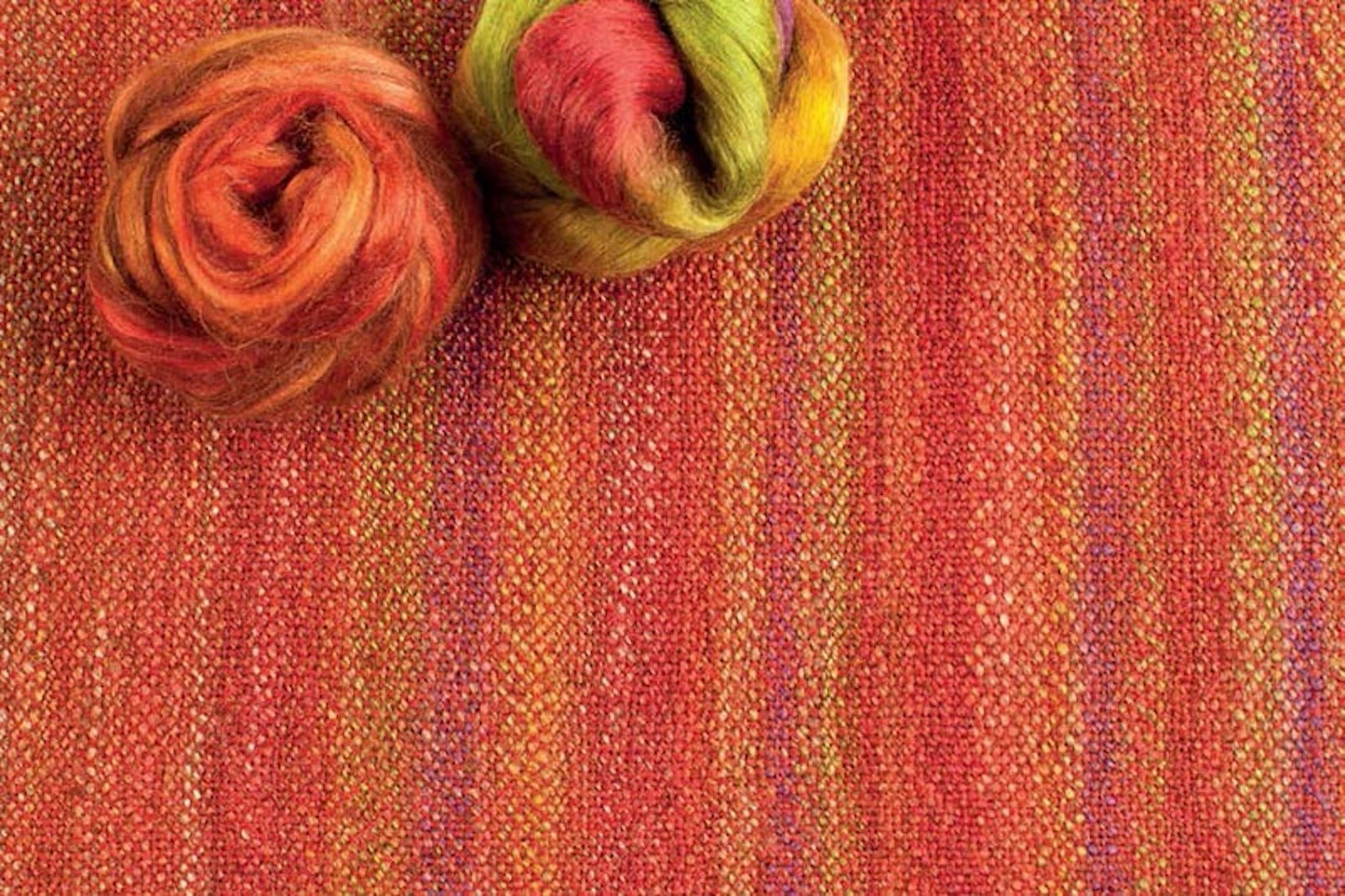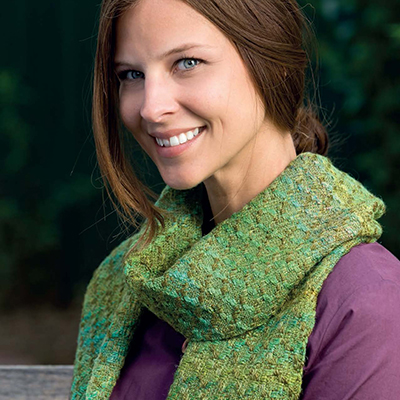One day I spent the afternoon wandering from one fabric store to another, ending up in an upholstery store. I explained to the sales woman that I was looking for some thick, grey, cotton, plain-weave fabric to use as a backing for one of my handwoven pieces. As the words "plain weave" came out of my mouth, it belatedly dawned on me that as a weaver I could weave exactly the fabric I was looking for. I excused myself, went home, and started going through my stash to pull out the greys.
For me, that experience in the fabric store highlights one of the things I love most about being a weaver: the ability to weave what I want rather than being dependent on fabrics others think I want or should want. The book Spin to Weave by Sara Lamb takes this unique ability one solid step further by describing in detail the processes she uses to spin yarn—that she then weaves—to create her beautiful fabrics.
My spinning skills are among the most primitive of spinners (I have yet to spin enough yarn to do anything with except admire.), so I fully respect Sara's approach to her craft. I've known many spinners who are loathe to sample and almost protective about weaving with their handspun yarns. The hours spent spinning enough yarn for a handwoven project can be daunting. Sara doesn't bemoan the hours spent spinning and yarn "wasted" on sampling but embraces both because they advance her toward completing the projects she envisions.
Forest Lattice Scarf by Amy Norris. Photo Credit: Joe Coca.
Spin to Weave is divided into 3 chapters: technical spinning and weaving information, projects and instructions, and project gallery. The projects are magnificent and beautifully photographed—offering an inspirational book for weavers and for spinners. As weavers we can weave what we want but if you spin the yarns you weave, your fabrics will be that much more unique and "yours".
Spin and weave well, Susan


